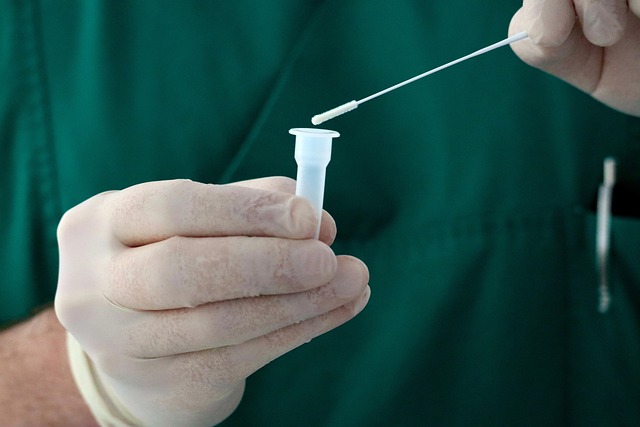In the UK, at-home blood tests are gaining popularity as a convenient way to monitor cholesterol levels, crucial for heart health. These tests measure total cholesterol (ideal below 5.2mmol/L), LDL ('bad' cholesterol, aim for under 3.0mmol/L) and HDL ('good' cholesterol, over 1.0mmol/L). By understanding these numbers, individuals can proactively manage their cardiovascular risk and prevent heart disease.
In today’s digital era, monitoring your health is more accessible than ever. One essential aspect of wellness is understanding and managing cholesterol levels. This article guides you through the process of cholesterol level testing with convenient UK blood tests at home. We’ll delve into what cholesterol is, why it matters, and how to interpret your results. By the end, you’ll be equipped with knowledge to make informed decisions about your heart health.
Understanding Cholesterol: What It Is and Why It Matters
Cholesterol is a waxy substance found in all cells in our bodies, playing a vital role in various functions, including building cell membranes and producing hormones. However, it’s also a significant risk factor for heart disease, particularly when levels become unbalanced. In the UK, a blood test at home can provide an easy and convenient way to monitor cholesterol levels.
High levels of low-density lipoprotein (LDL) cholesterol, often referred to as ‘bad’ cholesterol, can lead to plaque buildup in arteries, increasing the risk of heart attack or stroke. Conversely, high-density lipoprotein (HDL) cholesterol, known as ‘good’ cholesterol, helps remove LDL cholesterol from the bloodstream. Understanding these nuances is essential for managing cardiovascular health and preventing potential complications down the line.
UK Home Blood Tests: A Convenient Way to Check Cholesterol Levels
In the UK, a convenient and increasingly popular method for monitoring cholesterol levels is through at-home blood tests. These tests offer a simple and accessible way for individuals to take control of their cardiovascular health. With just a small sample of blood obtained from a finger prick, these kits provide fast results, allowing users to understand their cholesterol profile without the need for a clinic visit. This method is particularly beneficial for those who are hesitant about traditional blood draws or have busy schedules, making it an attractive option for proactive health management.
At-home UK blood tests provide a level of privacy and convenience that traditional testing might not offer. Results can be obtained quickly, empowering individuals to make informed decisions about their diet and lifestyle choices. Moreover, these tests can be easily ordered online, making cholesterol monitoring more accessible than ever before.
Interpreting Your Results: Decoding Cholesterol Numbers
When you receive your cholesterol test results from a UK blood test at home, understanding what each number means is crucial to maintaining heart health. Total cholesterol levels should ideally be below 5.2mmol/L. Levels between 5.2 and 6.5mmol/L are considered borderline high, while anything above 6.5mmol/L indicates a higher risk of heart disease.
Your results will also include LDL (low-density lipoprotein) cholesterol, known as ‘bad’ cholesterol, and HDL (high-density lipoprotein) cholesterol, or ‘good’ cholesterol. Aim for an LDL level below 3.0mmol/L as high levels contribute to plaque build-up in arteries. Conversely, higher HDL levels are protective; aim for over 1.0mmol/L.
Cholesterol level testing with a UK blood test at home is a convenient, accessible way for individuals to monitor their heart health. By understanding your cholesterol numbers and taking proactive steps, you can make informed decisions about your diet, lifestyle, and overall well-being. Remember, regular checks are key to managing cholesterol effectively and reducing the risk of cardiovascular issues.
